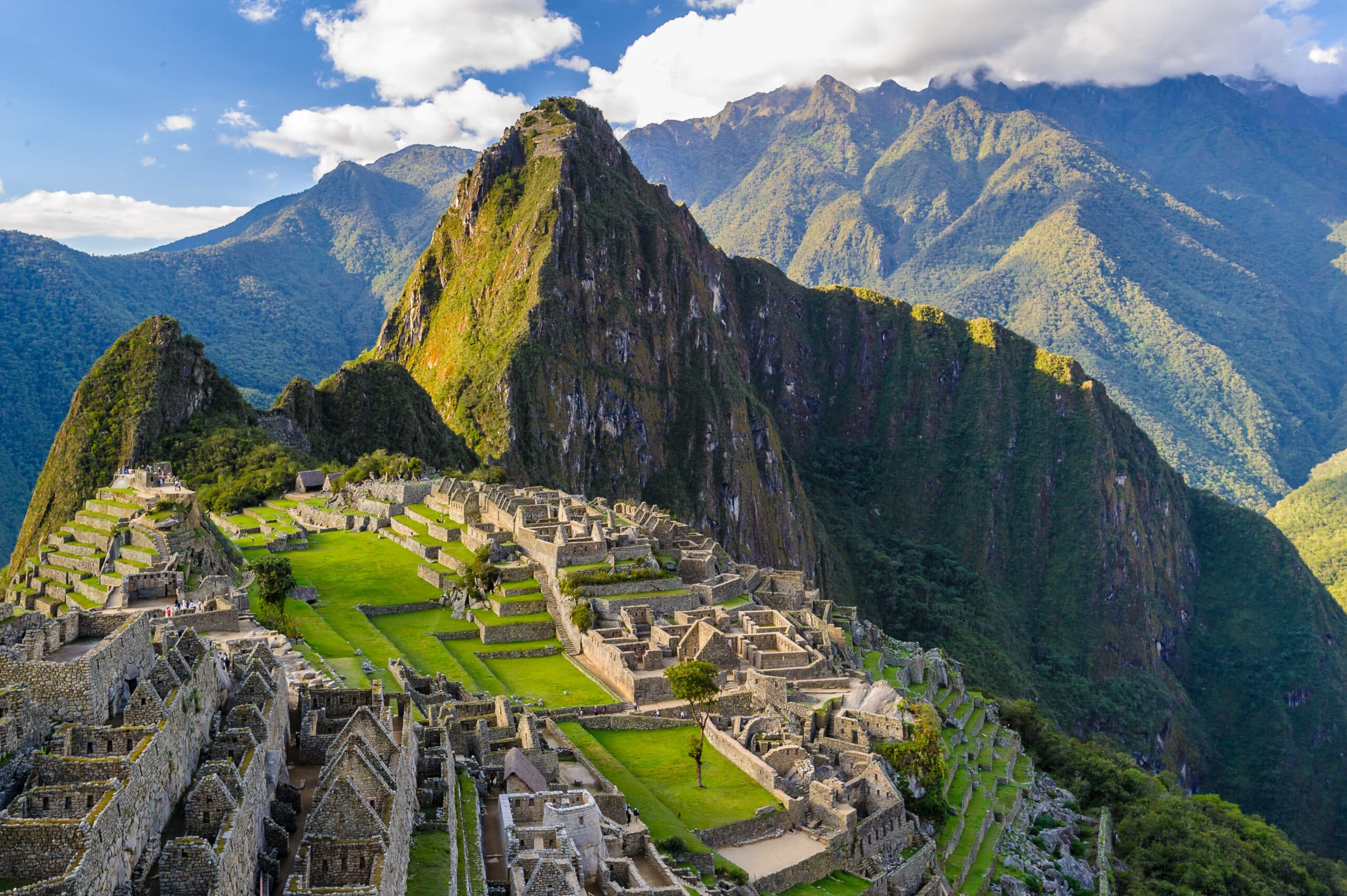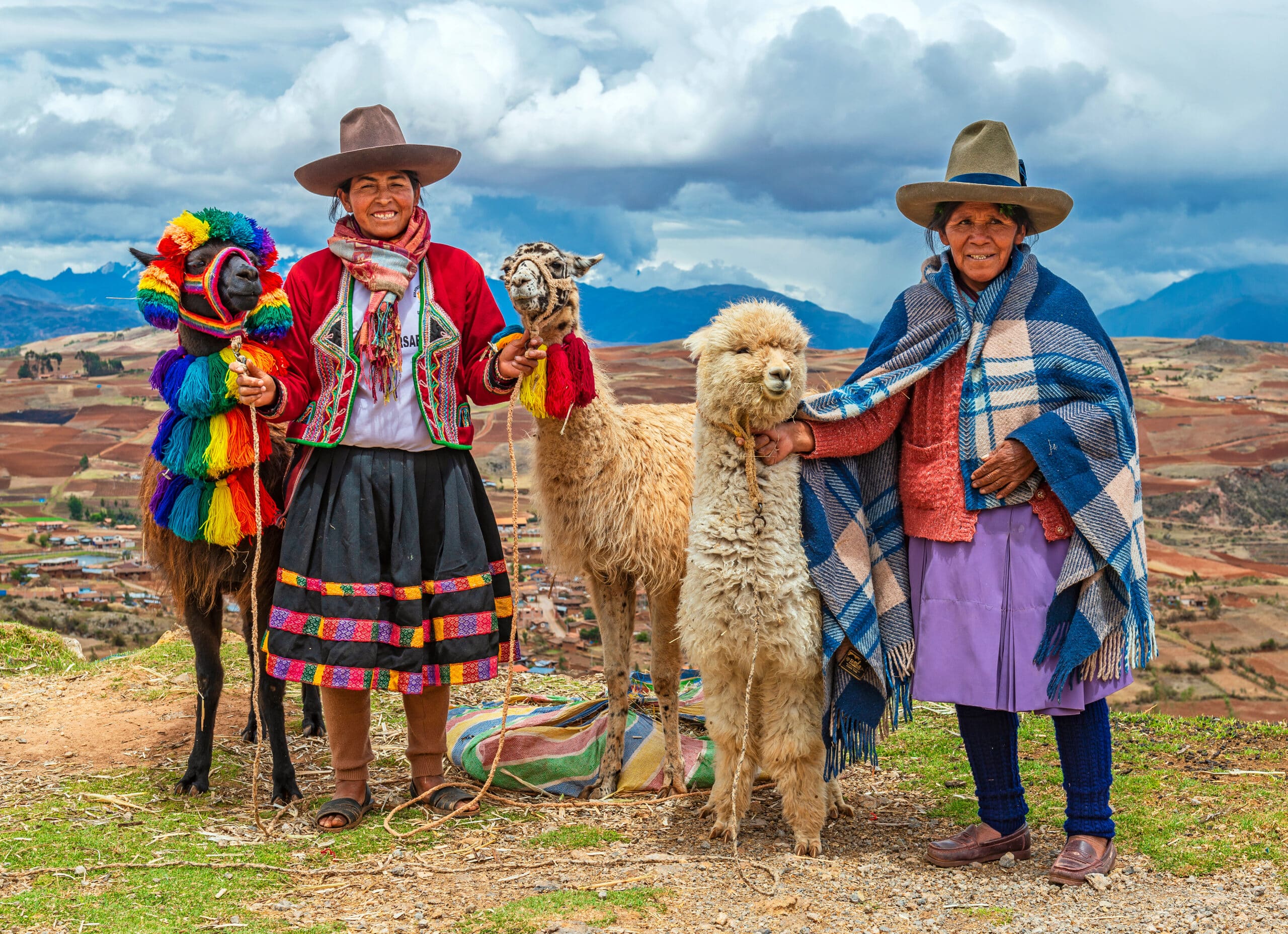
PERU – A Land of Wonder and Colour
PERU – A Land of Wonder and Colour
Peru is truly a magnificent place to visit – a land of wonder, colour and sites to be seen. This South American country, situated in the mid-west coast of the continent, is the third largest country, after Brazil and Argentina. The majority of Peru’s population lives on the western coast that meets the Pacific Ocean. At Luxury Women’s Tours, we are exceedingly excited to bring this location to our travelers!
This country abounds in a variety of landscapes, ranging from mountains and rainforests to beaches and deserts. You can go from a highly populated city, like the capital Lima which boasts a population of 11 million, to walking atop a mountain where you’ll see only green luscious mountains and probably an Alpaca or few.
Given that there is such a diversity of landscapes, so there is a huge diversity of weather conditions. However, given that Peru, like Australia, is also in the southern hemisphere, we share similar seasons, although Peru is a little further closer to the Equator – more akin to Papua New Guinea. Peru’s jungle areas reach over 30 degrees between April and October, and there is lots of sunshine with some short showers, so yes, it is a little humid.
As much as there is a variety of landscapes in Peru, there is also a variety of people and cultures in this country. Nationalities include Indians, Spaniards, a range of other Europeans, Asians and descendants of African slaves. Slavery was prevalent in this country and they formed the majority of Lima’s labour force by the 19th century. Whilst slavery was formally abolished in 1821, it really didn’t cease until 1854. The Spaniards introduced Catholicism which is still their main religion. The Spanish colonists arrived in Peru shortly after a very long civil war in 1526. The Inca’s defenses were weakened by this extended civil war, and thus the Inca’s inability to defend themselves. Peru is now a Republic, with a President, Congress and Supreme Court. The country’s currency is the Sol (Soles is the plural) which has the currency code of PEN.
More than most other countries on this planet, Peru has one of the widest varieties of plants and animals. Some of the unusual options include dolphins (both the Pink River and Amazon dolphin), Jaguars, Pum, Andean Fox, Amazonian Manatee, Toucans, Macaws, bears, sloth, giant otters and even their very own Humboldt penguin. You’ll also see eagles, bats, Llama and of course many Alpacas. Interestingly, 70% of the world population of Alpacas reside in Peru! The Jaguar is their largest predator and the Vicuñas is the national animal of Peru.
There is a great reason that more than 1.5 million people visit Peru each year, and primarily the archeological site Machu Picchu, which is a 15th century Inca citadel that is positioned in the Eastern Cordillera of the southern end of Peru. It’s positioned on a high mountain ridge in the Andes Mountains at 2400 metres above sea level. For this reason, even the most experienced and fit person does need to climatise to the high elevations. Built around 1450AD, Machu Picchu is an amazing symbol of the Incan empire. Google ‘7 wonders of the world’ and you’ll find Machu Picchu in that list, along with the Colosseum, Brazil’s Christ the Redeemer, the Taj Mahal, Great Wall of China etc. Some people like to be at the top of Machu Picchu before dawn, in order to see the first rays of sunshine hit the stone buildings and green terraces. The sight is spectacular. It’s frequently asked if sunrise or sunset is better; word is that sunrise is the best option!
Another amazing site, also very high up (5200 metres above sea level) there is Vinicunca, which is also known as the ‘Mountain of Seven Colors’. It has a few other names, such as Montaña de Siete Colores (meaning mountain of seven colours), Montaña de Colores (mountain of colours) or Montaña Arcoíris (which translates to Rainbow Mountain). It looks as if a giant child has taken crayons to the mountain and coloured stripes across it. It’s incredibly picturesque.
Peru is the home of a whopping 4% of the world’s freshwater resources, with the Arctic ice sheets holding the majority of our freshwater … with a number of great lakes around the world following – including Africa, North America and Russia. The primary source of the Amazon River is the Apurimac River, which originates from glacial meltwater high in the Andean peaks.
Other than rainforests, Machu Picchu, the Mountain of Seven Colors, there are many other things to see and do in this amazing destination. The cities, which comprise both modern and very traditional architecture abound with activities, things to see and of course shopping and restaurants. You can visit museums, temples, monuments, ancient churches and much more. You can travel in a car, bus, cycle or even hike; the options are endless or take a meandering river boat cruise. Of course, some options are more suitable for some of the spots you may want to visit.
Some of the foods you might like to try out include stir-fried beef, creamy chicken, potatoes in spicy cheese sauce, stuff spicy peppers, guinea pig and of course Ceviche, which is the national dish of Peru. This is fresh fish soaked in chilis and lime juice; both refreshing and very healthy. Of course, you’ll need to wash down those delectable flavours with a fantastic drink – perhaps a Lucuma milkshake, Chilcano, Inca Kola, Morada, Jugo or the national drink, which is Pisco Sour. In fact, Peruvians love Pisco Sour so much, it has its own day which occurs in February. It’s made of fermented grape juice, lime juice, egg whites and sugar.
If you get the opportunity, be sure to visit the Colca Canyon, which is double in size of the Grand Canyon in North America. It’s one of the depth canyons to be found in the world and like the Grand Canyon has the Rio Colca river at the bottom. Whilst this ‘carved’ out canyon is over a millennium, it’s somewhat small now. This region is also home to the Andean Condor. Then, if you want a change from mountains and glorious rainforests, you can hit the desert oasis of the Huacachina sand dunes, some of which reach a height of over 500 metres. With both spectacular scenery and interesting activities; it’s a drawcard for anyone who is into sand boarding or dune-buggy riding.
The coastline of Peru stretches over 3,000 kilometres. Whether it’s the warm waters to the north, or the cooler ocean to the south, the waters are home to an abundance of fish and wildlife; making seafood in coastal areas a natural choice. In some areas, it looks very similar to areas of Victoria’s Great Ocean Road, with high spectacular cliffs and especially the ‘Razorback’. Other areas have gorgeous beaches and fishing ports. One such fishing port which was originally somewhat quiet, is Mancora, which is now a posh and fashionable beach attracting a surf crowd from all over the world. Given that Mancora is on the northern end of the Peru coastline, it has warm temps all year round, making it an evergreen holiday destination.
As with all our tours, we select and curate only the best for our travelers. We do all the planning, organise everything plus, you’re travelling with other like-minded ladies who enjoy having a fantastic time and seeing amazing things. If you’re interested in Peru – just ask us!
